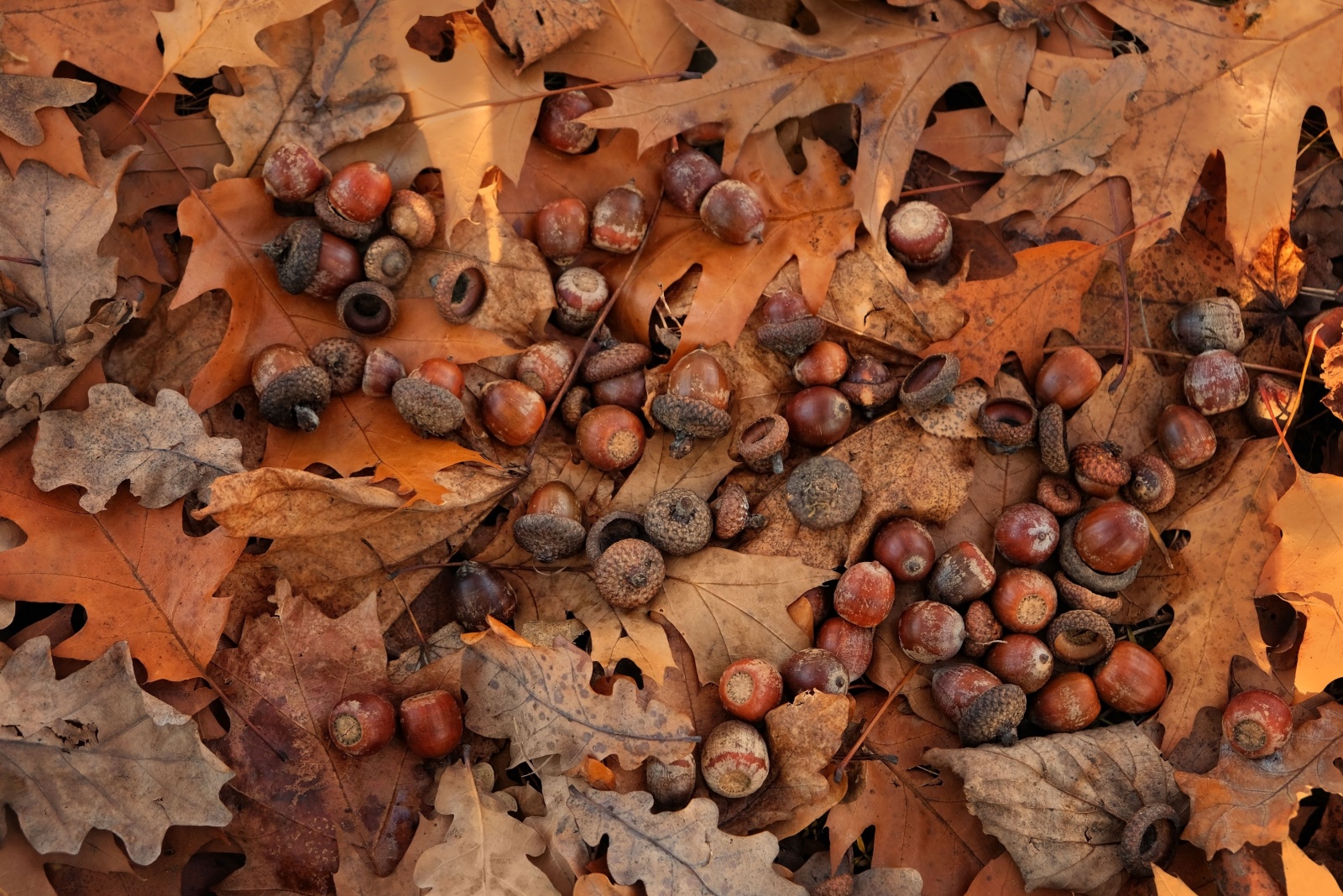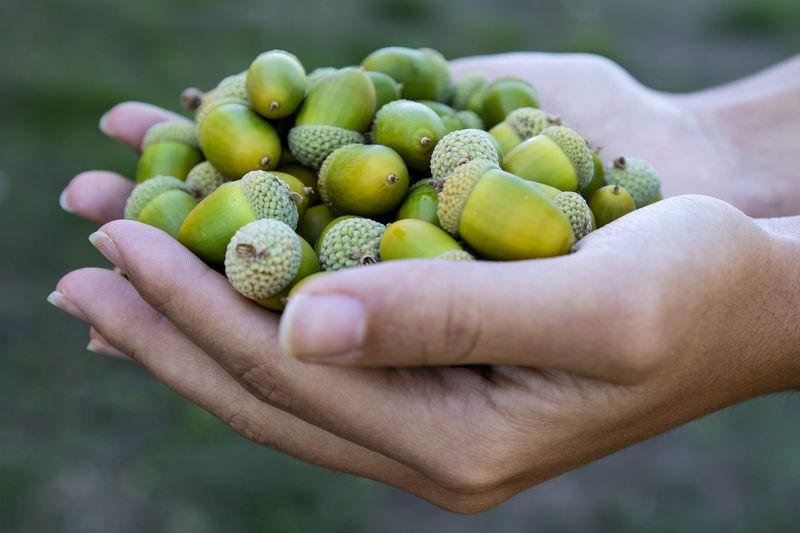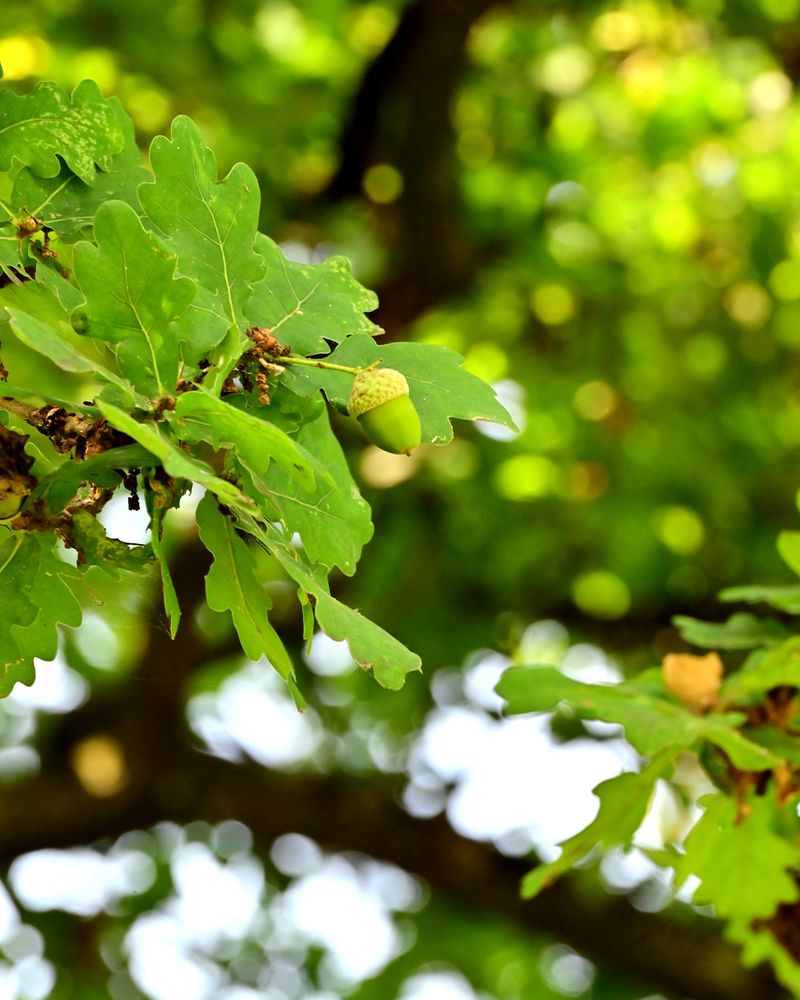If your driveway sounds like a drumline and your yard looks like it’s been pelted with pebbles, you’re not imagining things — Massachusetts is dealing with an acorn overload this year.
Oak trees across the state are dropping far more nuts than usual, and it’s leaving many homeowners wondering, What changed? The answer has everything to do with how these trees plan for the future.
1. Mast Year Phenomenon
Oak trees follow a natural cycle called a mast year, when they produce an overwhelming amount of acorns all at once. Scientists believe trees coordinate this massive seed production to outsmart hungry animals like squirrels and deer.
When there are too many acorns to eat, some will survive and grow into new trees. Mast years typically happen every two to five years, depending on weather conditions and tree health.
Massachusetts oak trees are experiencing a strong mast year right now, which explains the acorn explosion you’re witnessing everywhere you look.
2. Perfect Weather Conditions Last Spring
Last spring’s weather created ideal conditions for oak trees to pollinate successfully. Warm temperatures and gentle breezes helped spread pollen between trees, leading to excellent fertilization rates.
Rain came at just the right times, keeping trees healthy without washing away the delicate pollen. Frost didn’t arrive late to damage the developing flowers, which sometimes happens in unpredictable New England springs.
When pollination goes smoothly, oak trees can produce significantly more acorns than in years with harsh or inconsistent weather patterns during their critical blooming period.
3. Mild Summer Allowed Acorns To Mature
After pollination, acorns need several months to develop and mature properly. This past summer provided excellent growing conditions with adequate rainfall and moderate temperatures that helped acorns reach full size.
Extreme heat or drought can cause developing acorns to drop prematurely, but Massachusetts avoided those problems this year. Consistent moisture levels kept the trees healthy and able to support their heavy acorn load.
Trees that experience stress during summer often abort their developing seeds, so this year’s favorable conditions made all the difference in acorn production.
4. Oak Trees Stored Energy From Previous Years
Producing massive quantities of acorns requires tremendous energy, which oak trees accumulate over multiple years. During lighter acorn years, trees focus on storing nutrients in their roots and trunk rather than making seeds.
After building up these energy reserves for a couple of seasons, oaks can finally afford the metabolic cost of a big mast year. It’s similar to saving money in a bank account before making a major purchase.
Massachusetts oaks had sufficient stored resources this year to support the extraordinary acorn production we’re all noticing around our neighborhoods and parks.
5. Multiple Oak Species Synchronized Together
Massachusetts is home to several oak species, including red oaks, white oaks, and black oaks, and many synchronized their mast years together this season. When multiple species produce heavy acorn crops simultaneously, the effect becomes even more noticeable.
Each species has slightly different acorn shapes and sizes, contributing to the variety you might spot on the ground. Scientists still debate exactly how trees coordinate across species, but chemical signals and shared environmental cues likely play important roles.
The synchronized timing amplifies the visual impact of seeing acorns absolutely everywhere you walk this fall.
6. Fewer Pests And Diseases This Year
Oak trees face numerous threats from insects, fungi, and diseases that can reduce acorn production significantly. Fortunately, Massachusetts experienced lower pest pressure this year, allowing trees to direct more energy toward making acorns.
Gypsy moth caterpillars, which normally defoliate oaks during bad outbreak years, were less problematic this season. Fungal diseases that sometimes attack developing acorns also remained at manageable levels throughout the growing season.
With fewer health challenges to overcome, oak trees could focus their resources on producing the bumper acorn crop that’s now covering sidewalks and lawns statewide.







